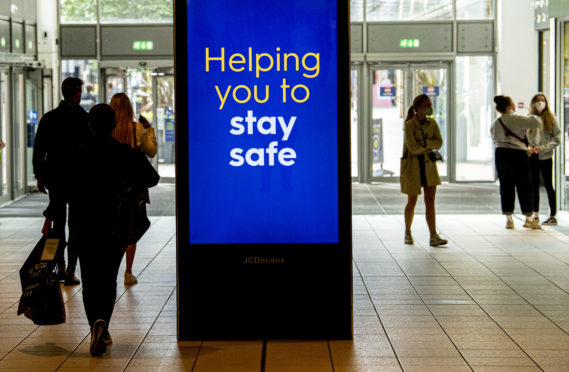
A total of 4,187 deaths were registered in Scotland with Covid-19 mentioned on the death certificate, as of July 12.
The weekly National Records of Scotland (NRS) figures, released every Wednesday, showed an increase of 13 deaths on the previous week.
Weekly death numbers have been going down for eleven weeks running. Last week 18 were recorded.
The latest updated statistics also show that people in deprived areas are more than twice as likely to die with Covid-19, and that those in urban areas have a mortality rate over four times that of those in remote locations.
2/5 #NRSStats show of all deaths involving COVID-19 between March – June 2020, 92% had at least one pre-existing condition. The most common main pre-existing condition was dementia and Alzheimer’s disease. https://t.co/Ku0qgjLAn2 pic.twitter.com/6scZ5fuZM1
— NatRecordsScot (@NatRecordsScot) July 15, 2020
Pete Whitehouse, Director of Statistical Services, said: “Every death from this virus is a tragedy and these statistics represent the heartbreak of many families across the country who have lost loved ones.
“Today’s publication includes updated analysis on mortality by occupation, deprivation, leading causes of death, pre-existing conditions and urban rural classification. We have also provided an updated breakdown by local area.
“This additional analysis provides important information on the progression and impact of the virus and we will continue to work alongside Public Health Scotland and the Scottish Government to provide robust information.”
The latest statistics come as Scotland takes its biggest step out of lockdown yet, with a number of sectors allowed to re-open.
From Wednesday, indoor pubs and restaurants, hairdressers, libraries, cinemas and museums can reopen, but customers will have to leave their contact details with these venues so they can be kept for the Test and Protect system.
What the NRS figures show
Released today was an updated analysis on the period of March 1 to June 30, looking at deaths by occupation, deprivation, pre-existing conditions and urban / rural areas.
NRS say the key findings remain similar to those published last month.
- Of all deaths between March and June from Covid-19, 92% had at least one pre-existing condition
- The most common was dementia and Alzheimer’s disease (31%)
- People in the most deprived areas were 2.1 times more likely to die with Covid-19 than those living in the least deprived areas
- The highest number of Covid-19 deaths among working people aged 20-64 by occupation group were among process, plant and machine operatives
- People living in larger urban areas were over four times more likely to die with Covid-19 than those in remote locations.
4/5 #NRSStats show people living in larger urban areas were over four times more likely to die with COVID-19 than those in remote locations. https://t.co/Ku0qgjLAn2 pic.twitter.com/Au3tzyBcpi
— NatRecordsScot (@NatRecordsScot) July 15, 2020
5/5 #NRSStats show the highest number of deaths involving COVID-19 of working people aged between 20-64 by occupation group were among process, plant and machine operatives. https://t.co/Ku0qgjLAn2 pic.twitter.com/kT19XDfhGv
— NatRecordsScot (@NatRecordsScot) July 15, 2020
Why this data differs from daily updates
The weekly figures differ to the daily numbers announced by Nicola Sturgeon at her press briefings as they also include deaths where there has not been a positive test for Covid-19, but it is a suspected or presumed factor.
The First Minister’s daily figures only record deaths of patients who have tested positive for coronavirus.
By that measurement, a total of 2,490 patients have died in Scotland after testing positive for coronavirus.

Enjoy the convenience of having The Sunday Post delivered as a digital ePaper straight to your smartphone, tablet or computer.
Subscribe for only £5.49 a month and enjoy all the benefits of the printed paper as a digital replica.
Subscribe